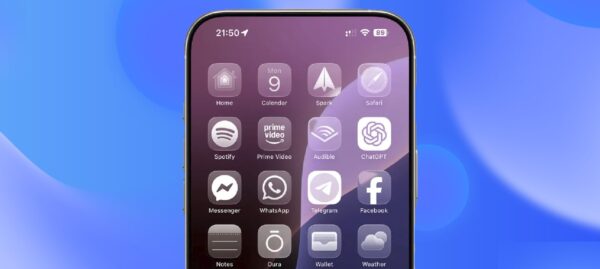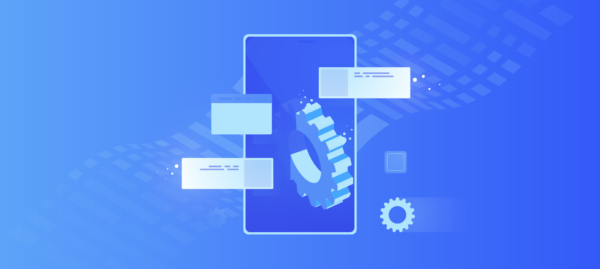How to Build an Application Modernization Strategy for Native to Cross-Platform Migration
Guilherme Rodrigues | Jul 29, 2025

So, you need an estimation for app development?
The answer is not as simple as the request since there are so many things that go into an estimate. Metaphorically speaking, it’s the same as asking a home builder how much it will cost to build a house. Do you want 1 or 2 bedrooms? How many floors? What type of fixtures do you want? What’s the square footage? You get the idea. To really provide a bonafide estimate to build the house, it takes in-depth conversation and exploration.
It is not so much different when talking about apps or websites. It really depends on the level of fidelity needed, the extent of the definition you have completed, and the reason behind the request. Be clear about your ask when talking to companies and share the reason why you are asking for an estimate and reveal all the details you have (if any). This will help them to understand how to best help and guide you. There are only two ways to provide an estimate when it comes to app design and development. The first would be a low-fidelity estimate, which we call a “guesstimate”, and the second would be a high fidelity estimate.
The benefit behind the guesstimate is that this rough high-level number will help you to understand the “potential” range of cost that it might be to undertake the project. This will help you determine if you have the budget or give you an idea of what budget to secure. Or you will decide that you are in a romance period and not being realistic. We call it a guesstimate because that’s what it really is – a guess. Unless you have a well-defined feature set and scope, it is based on nothing but an idea and historical numbers of something similarly created in the past. Since the design and development process is set up to be agile and flexible, the dollar and cents will always be moving targets, so until it’s defined, again, it is nothing more than a guess.
Unfortunately, potential customers push for this guesstimate, and inevitably, the numbers provided will be way off from reality, which will cause frustration and friction in the relationship later – assuming you decided to work with a company based on the guesstimate and did not do complete due diligence. Use the guesstimate to validate your level of seriousness and affordability, but please go through a process of definition to really understand and verify the level of effort it will likely take.
This is where the 2nd type, high fidelity estimate, comes into play. Being able to provide a high-fidelity estimation for app development depends on the inputs. If you have the product well defined (i.e., full UX/UI completed, complete feature set, etc.), it would be relatively effortless to create this level of the estimate. However, if you don’t have this level of product definition, then it will be impossible to provide it. But you still need a high-fidelity estimate. Don’t worry. We have you covered.
What do you do at this point? Your partner should have a process where they take a deep dive collaboratively into your concept and create a number of outputs that give you this level of estimate and help set you up for future success. Ideally, you should be able to take this estimate to the bank. How do we arrive at this type? I am glad you asked.
Cheesecake Labs has a three-phase methodology that has been fine-tuned over the last decade. The first phase is called the Product Definition phase. When it makes the most sense to enter this phase is where a potential client says:
“I have an idea, which is not clearly defined, don’t know where to start, but I need a high fidelity estimate for budget or investment purposes.”
Now, this is where the fun begins and the reason why the Product Definition phase is a must and results in success, whichever way you look at it.
In this phase, there’s a lot of unpacking done and magic that happens to ultimately provide the high fidelity estimate. Undertaken over the course of 3 – 6 weeks (depending on the complexity of the potential product), the product manager will ask you challenging questions and take you on a path to define the problem intended to be solved. Here’s an example of a range of activities/ deliverables you should expect to work through during this phase.
Week 1 & 2
Weeks 3 to 6
While the above would be customized based on your specific needs, it gives you great insight into the various things that need to be done in the process to produce any level of fidelity. And, the result here is more than an estimation for app development, so there’s a lot of value to this phase. It provides clarity so both parties can understand precisely what is intended to be designed and built with all the guesswork taken out of the equation regardless of which partner you decide to work with to develop the product.
Taking it back to this article’s original topic, estimating a project, as you can see, it’s just not as easy as asking for an estimate. There are benefits and consequences to the question which affect the fidelity of the outcome. Deciding on which direction you go, guesstimate, or high fidelity depends on your needs and what you have (or don’t have) prepared.
Remember, the guesstimate is just merely that and can’t be taken to the bank. Use this for an internal barometer as opposed to deciding which partner to work with since there are many things a company can do to present this number to you. There is no way to do an apples to apples comparison among companies with a guesstimate. Of course, if you have things clearly defined, then producing a high fidelity estimate should be relatively easy but will take some effort to deliver. If you don’t have things clearly defined, then demand a Product Definition phase as your wallet and customers rely on it.
Once you have that estimation for app development in hand, keep in mind that the spending does not stop there. The product will need to be evolved and optimized over time post-launch to ensure that it continues to solve the problem and serves your customer’s needs as intended.
So, what do you really need? A guesstimate or a high fidelity estimate. Please send us a message so we can explore how we can work together.

Jeremy Stephan is no stranger to building digital products. In fact, he's worked with Disney, NBC, Mercedes-Benz, HotelTonight, and many other companies in helping to guide them through the app design and development process. Jeremy has led client engagement in the digital space for over 10 years and served as a mentor within the TechStars network.

Caio Luz | Jul 25, 2025

